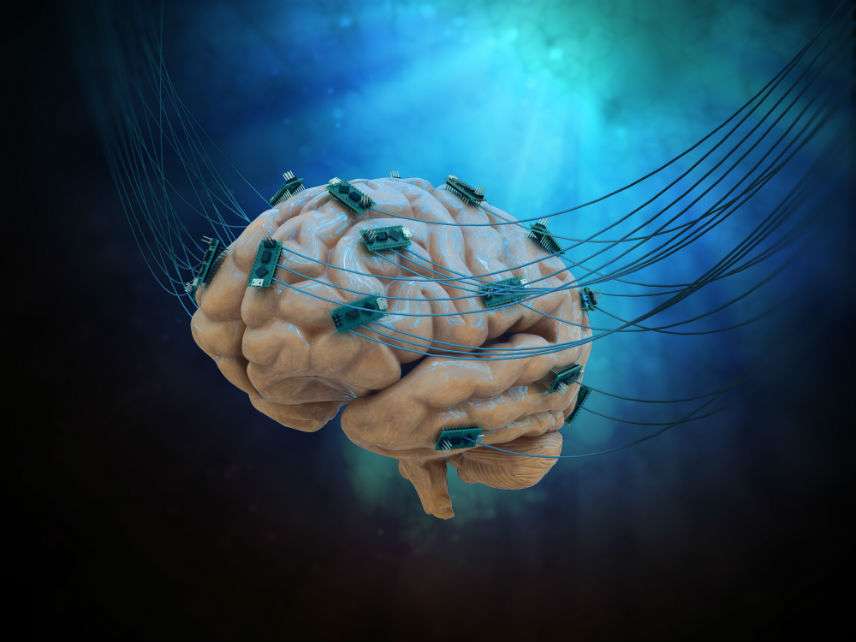Are Brain Implants to Control Moods Ethical?
If neuropharmaceuticals are ethical, so are machine-brain interface technologies.

Will it be possible someday to tweak your mood with a machine? And if such mood organs ever do appear, will it be ethical to use them?
This month's Society for Neuroscience conference featured two teams of researchers who want to use brain-machine interfaces to treat mood disorders. One group, based at the University of Southern California in Los Angeles, recorded the brain activity of six people who'd had electrodes implanted in their heads as a treatment for epilepsy. The scientists then correlated the subjects' brain activity with their reported moods. "By comparing the two types of information, the researchers could create an algorithm to 'decode' that person's changing moods from their brain activity," reports Nature. Once the neural pattern for an upbeat mood has been identified, the researchers want to see whether implanted electrodes could stimulate a subject's brain cells in a way that reproduces that sunny mood.
The Columbia University neuroscientist Christine Denny has already achieved just that result in mice. Denny is able to record the neural pattern of a mouse that feels safe and is in an apparently good mood. When she puts the mouse into a situation where it feels fearful, Denny replays the neural pattern and the mouse engages in behaviors that suggest that it is remembering its earlier feeling of being safe and happy.
The other mood-machine team at the meeting is mapping the brain activity associated with different behaviors, such as concentration and empathy. Based on these neural maps, the researchers, based at Massachusetts General Hospital, have developed algorithms designed to guide the application of electrical pulses in subjects' brains. The goal is to improve their performance on test tasks, such as identifying emotions on faces. "The researchers found that delivering electrical pulses to areas of the brain involved in decision-making and emotion significantly improved the performance of test participants," reports Nature.
Both teams ultimately want to learn how to stimulate the brain without having to implant electrodes. The machine-brain interfaces being developed Facebook's Mark Zuckerberg and Elon Musk's Neuralink startup may be an appropriate model.
Both teams' work is being funded by the Defense Advanced Research Project Agency. One salutary goal of such research would be to use machine-brain interfaces to lift the mental burden of veterans and active soldiers suffering from post-traumatic stress disorder. On the other hand, it is not too far a stretch to imagine the military using the technology to dampen the neural patterns for empathy and fear.
Nature also cites the concerns of Baylor College of Medicine psychiatrist Wayne Goodman, who worries about "overcorrecting emotions to create extreme happiness that overwhelms all other feelings." This fear is reminescent of "wireheading," a phenomenon in Larry Niven's Known Space science-fiction stories where people use electronic brain implans to stimulate the pleasure centers of their brains.
Niven was inspired by the work of psychologists James Olds and Peter Milner, who in the 1950s discovered the mammalian pleasure center by implanting electrodes into the brains of rats. The rats could activate the electrodes by pushing a lever. "Some rats would self-stimulate as often as 2000 times per hour for 24 hours, to the exclusion of all other activities. They had to be unhooked from the apparatus to prevent death by self-starvation," notes HuffPost.
It is entirely appropriate to be on alert for governments misusing machine-brain interface technologies to manipulate people. But when it comes to people voluntarily altering their own minds, the authorities should butt out. If it is ethical to use neuropharmaceuticals to treat depression or anxiety, surely it is also acceptable to use a machine-brain interface to accomplish the same therapeutic goals more effectively.


Show Comments (27)